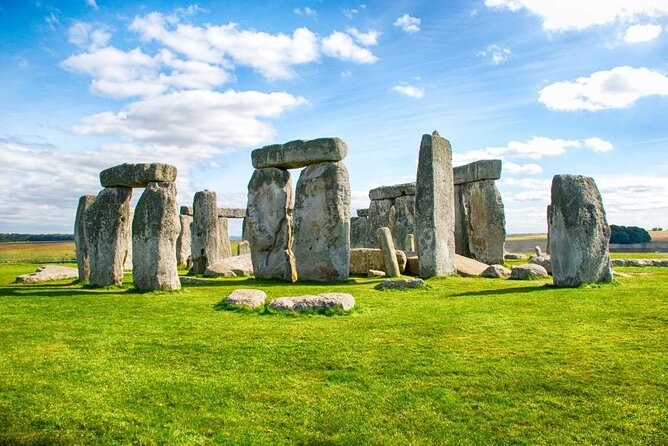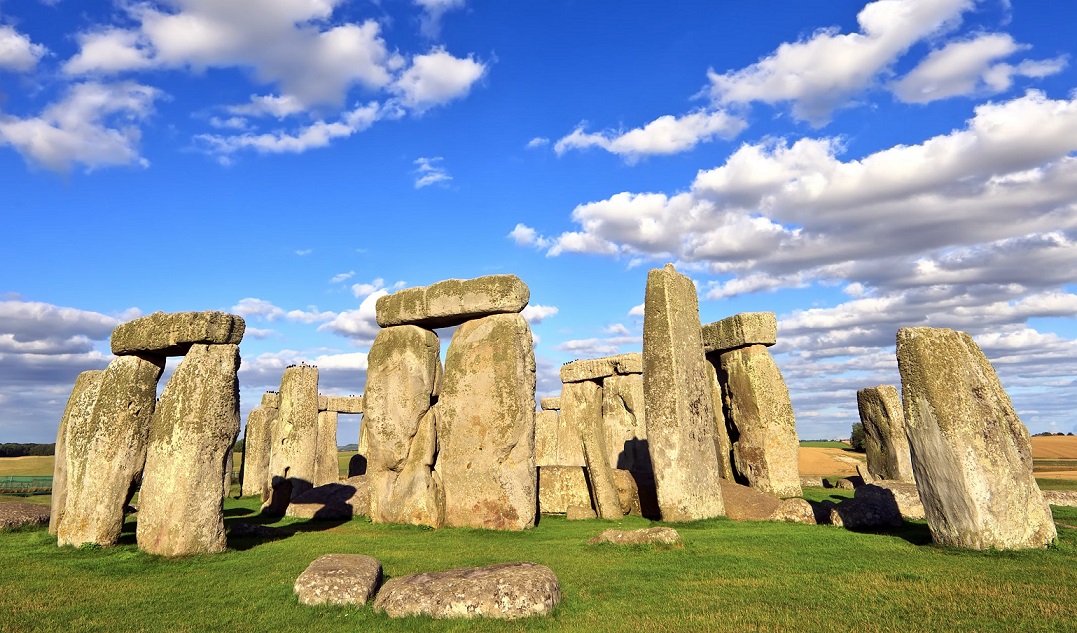
Stonehenge Secrets & Roman Baths Luxury: Your Time-Travel Guide to Southwest England
Forget sci-fi gadgets; Southwest England offers the ultimate time machine. Within a surprisingly compact region, you can stand in awe before the enigmatic stones of prehistory and immerse yourself in the sophisticated luxury of a Roman spa town. This is your essential guide to unlocking the secrets of Stonehenge and experiencing the opulence of Bath – a journey spanning millennia.
Chapter 1: Salisbury Plain Whispers – Unveiling Stonehenge’s Secrets
Your temporal voyage begins on the windswept expanse of Salisbury Plain. As you approach Stonehenge, its iconic silhouette against the vast sky triggers an immediate sense of profound mystery. This isn’t just a pile of old rocks; it’s a meticulously engineered monument whispering secrets from over 4,500 years ago.
- The Monument Itself: Get up close (via the accessible shuttle or walk) to truly appreciate the scale. The towering sarsen stones, some weighing over 25 tons, were dragged from the Marlborough Downs 20 miles away. Nestled within them are the smaller, enigmatic bluestones, transported an astonishing 150+ miles from the Preseli Hills in Wales. How Neolithic people achieved this feat, without wheels or metal tools, remains one of archaeology’s greatest puzzles.
- Alignments & Astronomy: Stonehenge is a celestial calendar carved in stone. Witness the precision: the axis aligns perfectly with the midwinter sunset and the midsummer sunrise. Stand at the center on the solstice, and imagine ancient ceremonies marking the turning points of the year, connecting earth to cosmos. Was it a temple, an observatory, a healing site? The secrets endure.
- Beyond the Circle: Don’t rush away. Explore the surrounding landscape, rich with clues. Walk the Avenue, the ancient processional approach. Visit nearby Durrington Walls, believed to be the vast settlement housing the builders, and Woodhenge, its timber counterpart. Look for barrows (burial mounds) dotting the horizon – silent sentinels of a complex ritual landscape.
- Visitor Insight: Book tickets well in advance, especially for solstice access. Opt for the early morning or late afternoon “Special Access” tours (extra cost) for a quieter, more intimate experience inside the stone circle itself – a truly magical privilege. The excellent visitor centre, with its reconstructed Neolithic houses and fascinating exhibits (including a forensic reconstruction of a builder!), is essential for context.
Chapter 2: Georgian Elegance Meets Roman Grandeur – The Timeless Luxury of Bath
A short journey west transports you from prehistory to the pinnacle of Roman engineering and Georgian refinement: the UNESCO World Heritage city of Bath.
- The Roman Baths: Heart of Aquae Sulis: Step beneath the elegant 18th-century Pump Room into the remarkably preserved world of the Roman Baths. Feel the palpable history:
- The Sacred Spring: Gaze into the steaming, green-hued waters where Celtic Britons first worshipped the goddess Sulis, later adopted by the Romans as Minerva Sulis. See the original Roman lead-lined reservoir and the rising steam – the source of Bath’s existence.
- The Great Bath: Marvel at this vast, open-air pool, still fed by the natural hot springs (46°C / 115°F). Imagine Roman citizens socializing, conducting business, and bathing amidst the grandeur, surrounded by towering columns and statues under the British sky (covered now for protection).
- Tepidarium & Caldarium: Explore the series of bathing rooms – the warm Tepidarium, the hot Caldarium with its hypocaust (underfloor heating) system still visible. See the intricate mosaics, the gilt bronze head of Minerva Sulis, and thousands of Roman coins and “curse tablets” thrown into the sacred spring, offering glimpses into daily life and pleas to the goddess.
- The Pump Room: Conclude your Roman tour by emerging into the neoclassical splendour of the Pump Room. Indulge in the tradition: sample the warm, mineral-rich spa water (an acquired taste!) while enjoying live music and imagining Jane Austen’s characters doing the same centuries later.
- Georgian Bath: A City Sculpted in Stone: The Romans harnessed the springs; the Georgians built a masterpiece city around them. Bath’s honey-coloured Bath Stone architecture creates a uniquely harmonious and luxurious atmosphere:
- The Royal Crescent & The Circus: Stroll past these architectural triumphs. The sweeping Royal Crescent, a perfect semi-ellipse of 30 terraced houses, is the epitome of Georgian grandeur. Nearby, The Circus, designed by John Wood the Elder, forms a stunning circular space inspired by the Colosseum.
- Pulteney Bridge & River Avon: Admire one of the world’s few bridges lined with shops, modelled after Florence’s Ponte Vecchio. Enjoy walks along the River Avon for beautiful city views.
- Assembly Rooms & Fashion Museum: Step into the Assembly Rooms, once the glittering social hub for Georgian high society. Visit the Fashion Museum housed within, showcasing centuries of exquisite style.
- Modern Thermal Luxury – Thermae Bath Spa: Complete your Bath experience with a touch of contemporary indulgence at the Thermae Bath Spa. Bathe in the naturally warm, mineral-rich waters just as the Romans did, but now in a stunning modern rooftop pool with panoramic views over the city’s spires. It’s a unique fusion of ancient tradition and modern luxury.
Your Time-Travel Toolkit: Tips for the Journey
- Base Yourself: Bath makes an ideal base. It’s a compact, walkable city with excellent transport links. Salisbury (closer to Stonehenge) is another good option.
- Transport: Renting a car offers maximum flexibility for exploring the wider region (Cotswolds, Avebury Stone Circle, Glastonbury Tor). Efficient trains connect London to Bath (approx. 1.5 hours) and Bath to Salisbury (approx. 1 hour). Dedicated tour buses run from Bath/Salisbury to Stonehenge.
- Combining the Sites: Stonehenge and Bath can easily be visited in one long, immersive day trip from London, but staying overnight in Bath is highly recommended to soak in its atmosphere. Allow at least 3-4 hours for Stonehenge (including transport to/from the visitor centre) and a minimum of 3 hours for the Roman Baths.
- Beyond the Big Two: If time allows, explore Avebury (a massive stone circle you can walk amongst), Glastonbury (steeped in Arthurian legend), or the picturesque villages of the Cotswolds.
- Book Ahead: This is crucial, especially for Stonehenge (including shuttle tickets), the Roman Baths, Thermae Bath Spa, and popular restaurants in Bath. Solstice access requires very early planning.
- Packing Tip: Bring layers – Salisbury Plain is exposed and often windy/wet. Pack swimwear for Thermae Bath Spa!
Conclusion: An Unforgettable Journey Through Time
Southwest England offers a time-travel experience unlike any other. From the primal mystery shrouding Stonehenge’s ancient stones, echoing with the whispers of Neolithic engineers and celestial alignments, to the sophisticated luxury and engineering marvel of the Roman Baths, seamlessly woven into the elegant fabric of Georgian Bath, this journey transcends centuries. It’s a captivating exploration of human ingenuity, spirituality, social ritual, and the enduring quest for comfort and meaning. Stand where druids may have chanted, bathe where Roman legions soaked, and promenade where Georgian aristocracy sought pleasure. Unlock the secrets, indulge in the luxury, and let Southwest England be your extraordinary time machine. Your adventure through millennia awaits.





















